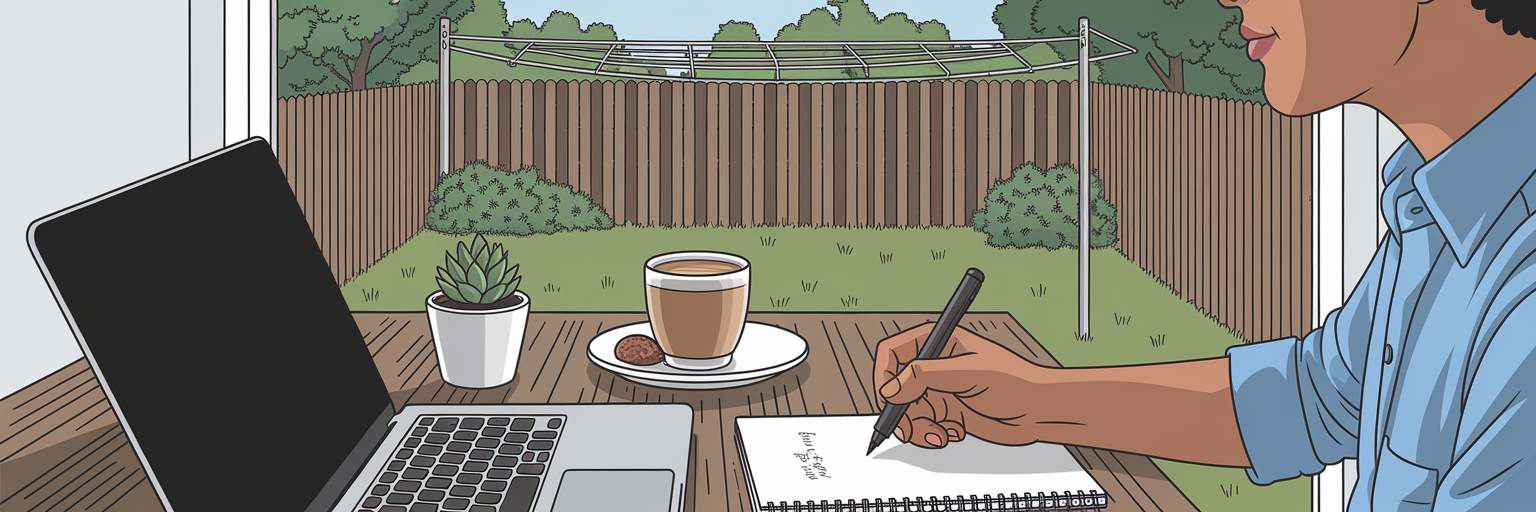Search Blog
A Practical Guide to High Converting Aussie E Commerce
For Australian businesses, a great website is more than just a digital address. It’s your primary tool for growth. Building effective e-commerce solutions for Australian businesses means understanding that local shoppers value efficiency, trust, and a genuine connection. A website’s design isn’t just about looking good; it’s about creating the clearest, simplest path for a customer to find what they need and make a purchase.
Core Elements of a User-Friendly Online Store
A confusing online store is the digital equivalent of a messy shop floor, and it’s the fastest way to lose a potential customer. The foundation of a successful e-commerce site rests on a few core principles that make the shopping experience feel effortless. Think of it as guiding your customer by the hand from the moment they arrive.
Here are the non-negotiable elements your store needs:
- Intuitive Navigation: Your menu and search bar are your most important guides. For stores with a small product range, a simple, clean navigation bar works perfectly. If you have a large inventory, a well-structured ‘mega menu’ organises products into clear categories, much like the easy-to-follow aisles in a supermarket, rather than a cluttered garage sale.
- Blazing-Fast Speed: With so many Australians shopping on their phones, page speed is critical. Every extra second your site takes to load is another reason for a customer to leave. Simple actions like compressing image sizes and choosing a reliable hosting provider can make a significant difference to your load times and sales.
- Mobile-First Design: Your website must work flawlessly on a small screen. This means more than just shrinking your desktop site. Text needs to be easily readable without zooming, and buttons must be large enough for someone to tap comfortably with their thumb.
- Authentic, High-Quality Visuals: Generic stock photos feel impersonal and can erode trust. Instead, invest in professional product photography and lifestyle shots that show your products in a relatable Australian context. A photo of your product being used at a local beach or in a Melbourne laneway builds a far stronger connection than a sterile studio image.
Establishing Trust with Secure Payments and Clear Pricing
Once a customer has found what they want, the next step is making them feel completely safe to complete the purchase. In Australia, financial transparency is not just good practice; it’s expected. Any hint of hidden costs or unfamiliar payment processes can create doubt and lead to an abandoned cart just moments before a sale is made.
To build this crucial trust, focus on these key areas:
- Offer Familiar Payment Options: Seeing trusted logos at checkout is immediately reassuring. Your store must offer a range of secure payment gateways Australia based shoppers know and use. This includes major credit cards like Visa and Mastercard, PayPal, and the incredibly popular Buy Now, Pay Later services such as Afterpay and Zip.
- Display Prices in AUD, Including GST: This is a non-negotiable for the Australian market. Under Australian Consumer Law, all prices displayed to consumers must be inclusive of the Goods and Services Tax (GST). Revealing the tax only at the final checkout step is a major frustration that feels deceptive and breaks trust instantly.
- Simplify the Checkout Process: A long and complicated checkout is a notorious conversion killer. Make the final step as quick as possible by offering a guest checkout option, keeping forms short, and using address auto-complete features to reduce manual typing.
Selecting the Right E-Commerce Platform
Choosing the right platform is a foundational decision that will shape how you run and grow your online store. The two most popular choices, Shopify and WooCommerce, both offer powerful features, but they cater to different business needs and technical comfort levels. The debate over Shopify vs WooCommerce Australia isn’t about which is better overall, but which is the right fit for you.
WooCommerce: The Customiser’s Choice
For businesses that want complete control and unique functionality, WooCommerce is often the ideal solution. As a plugin for WordPress, it offers almost limitless flexibility. You can tailor every aspect of your store, from the design to the checkout experience. This is perfect for integrating with specific local services, like adding a plugin for live Australia Post shipping rates or creating a highly customised product builder.
Shopify: The All-in-One Powerhouse
Shopify is a fully hosted, all-in-one platform designed for ease of use. It’s an excellent choice for business owners who want to launch quickly without getting bogged down in technical details. Shopify handles the hosting, security, and software updates for you. Its straightforward interface and simple settings for Australian GST make it incredibly user-friendly, allowing you to focus on selling rather than site maintenance.
Making the Right Decision for Your Business
Your choice depends on your budget, technical skills, and long-term vision. To see what’s possible with these platforms, you can explore our portfolio of successful e-commerce solutions we’ve built for Australian businesses. The table below summarises the key trade-offs.
| Factor | Shopify | WooCommerce |
|---|---|---|
| Ease of Use | Very beginner-friendly, all-in-one setup | Requires some technical comfort (WordPress) |
| Initial Cost | Monthly subscription fee | Free plugin, but requires paid hosting/themes |
| Customisation | Good, but limited to Shopify’s ecosystem | Nearly limitless with thousands of plugins |
| Local Integrations | Strong native support for Aussie payments/tax | Excellent via plugins (e.g., Australia Post) |
| Best For | Businesses wanting a quick, easy launch | Businesses wanting full control and unique features |
This table summarises the key trade-offs. Your choice depends on your budget, technical skills, and long-term vision for your store.
Localising Your Store for an Australian Audience
Beyond the technical setup, making your store feel genuinely Australian comes down to the small details in your content and communication. These cultural nuances signal to customers that you understand their world, which builds a much stronger connection than a generic, international-feeling website ever could. It’s about showing you’re part of the local community, not just selling to it.
Here is a simple checklist for localising your store:
- Speak Their Language: Use Australian English spelling (e.g., ‘organise’, ‘colour’) and adopt a relatable, down-to-earth tone of voice. This simple adjustment makes your brand feel familiar and trustworthy.
- Use Relevant Imagery: As mentioned earlier, authentic visuals are key. Go beyond just product shots and use images that reflect the Australian lifestyle. Show your products at a weekend barbie, on a trip to the coast, or in a bustling city laneway.
- Align with the Local Calendar: Build your marketing and sales promotions around key dates in the Australian calendar. Think big for Boxing Day and End of Financial Year (EOFY) sales, and don’t forget local public holidays.
- Provide Accessible Local Support: Nothing builds trust like knowing help is easily available. Listing a 1300 number and providing customer service hours in a local time zone (like AEST/AEDT) shows customers that a real person is there to help when they need it.
Attracting Customers with Local SEO and Logistics
Having a great online store is only half the battle; customers need to be able to find you. Even for a business that sells exclusively online, geography matters. This is where local SEO for ecommerce stores becomes essential, helping you connect with nearby customers who are actively searching for your products.
Start by optimising your website for local search terms. Instead of just targeting “organic skincare,” focus on phrases like “organic skincare Melbourne” or “natural face cream Sydney.” This helps you appear in front of customers with a high intent to buy in your area.
A Google Business Profile is another free and powerful tool. It boosts your visibility on Google Maps and in local search results, adding a layer of credibility and making it easy for customers to find your details. As noted by industry experts at The Aussie Digital, a key benefit of this approach is that it improves online visibility in local markets and attracts high-intent traffic.
Next, address the practical challenge of shipping across Australia. Create a clear and simple shipping policy. Offering flat-rate shipping or free delivery over a certain spend can reduce cart abandonment. Mentioning that you use reliable domestic couriers like Australia Post or Sendle also builds confidence. For more detailed guides on digital marketing, you can explore our knowledgebase.
Finally, if you have a physical location, offering a ‘Click and Collect’ option is a fantastic way to provide convenience and save your customers on shipping fees.
Building a High-Performance E-Commerce Machine
Launching your online store is just the beginning of the journey. A truly successful e-commerce business is one that continuously improves. The central question of how to increase online sales Australia wide is answered not by a single action, but by a commitment to ongoing optimisation.
This is where Conversion Rate Optimisation (CRO) comes in. In simple terms, CRO is the process of using data and customer feedback to make small, strategic improvements to your website that lead to more sales. High conversion rates are the result of all the elements discussed working together in harmony: a solid platform, a user-friendly design, strong local trust signals, and targeted marketing.
While you can manage many of these elements yourself, partnering with specialists can provide the expertise needed to accelerate your growth and build a truly high-performing sales engine. If you’re ready to build a powerful online store or optimise your current one, reach out to discuss how we can help.





